Grenache, also known as Garnacha, is a red wine grape variety that is extensively cultivated across the world. It requires hot and dry conditions for proper ripening, which is why it is believed to have originated in Spain. The grape is also grown in various other regions including Sardinia, southern France, Australia, and California’s Monterey AVA, Paso Robles, and San Joaquin Valley.
Understanding Garnacha Wine: What Is Grenache Wine?
Grenache has a spicy and berry-flavored taste with a soft texture on the palate. The wine produced from this grape has a relatively high alcohol content but requires careful management of yields for optimal results. Grenache based wines are characterized by red fruit flavors such as raspberry and strawberry with a subtle hint of white pepper spice.
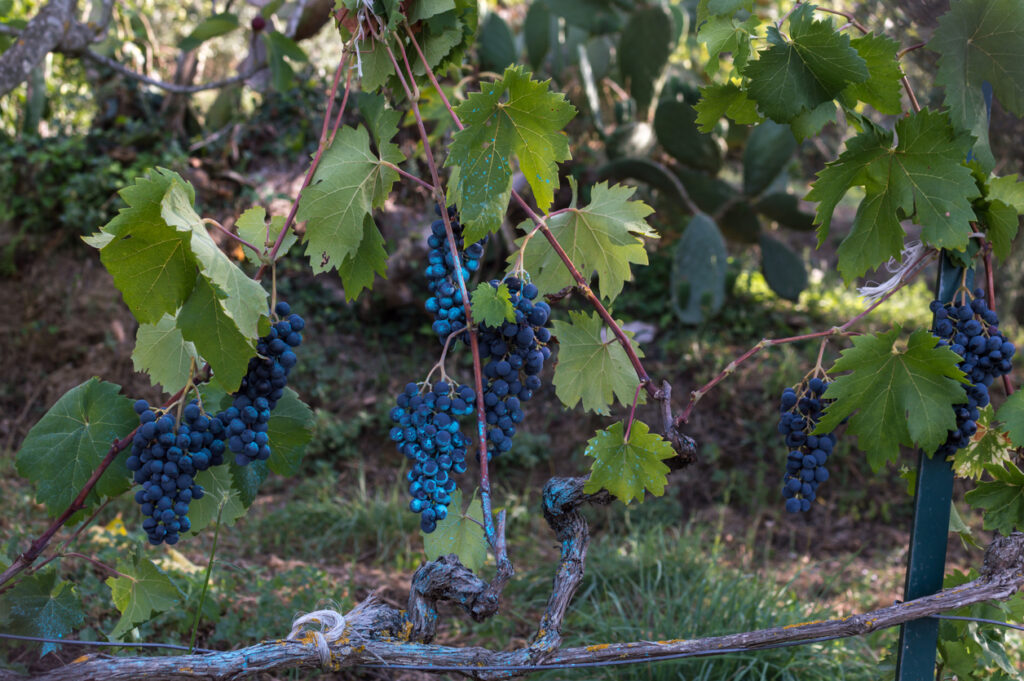
Grenache Wines
Young Grenache wines have a tendency to oxidize, resulting in a brownish color around the rim when viewed at an angle in a glass. As they age, Grenache wines develop flavors of leather and tar. Due to their low to medium acidity, tannin and color, Grenache wines are commonly blended with other varieties such as Syrah, Carignan, Tempranillo, and Cinsaut.
Characteristics of Grenache Wine
Grenache wine is a red grape varietal that produces a wide range of flavor profiles depending on the climate and soil where it is grown. However, there are some general characteristics that can be associated with this wine variety. When tasting Grenache, you can expect to experience flavors of ripe raspberry and juicy cherry on the palate, which give the wine its fruity character.
In addition to the fruitiness, Grenache often has distinct aromas of white pepper and spice. These peppery notes are complimented by subtle herbal undertones, which contribute to the complexity of the wine’s flavor profile. The combination of fruitiness and spice make it an excellent pairing for grilled meats or roasted vegetables.

The tannins in grenache wines also tend to be soft and silky, making them easy-drinking even when young.
Where Does Grenache Wine Come From?
GSM or grenache syrah mourvedre is a blend of three red grape varieties that originated in the southern Rhône Valley of France A famous wine region produces great Grenache based wines is Chateauneuf du pape. Grenache, which is the dominant grape in the blend, gives GSM its fruitiness and warmth. Syrah, on the other hand, adds spice and structure to the wine while mourvedre provides depth and complexity.
GSM Blended wines
GSM or grenache syrah mourvedre is a blend of three red grape varieties that originated in the southern Rhône Valley of France A famous wine region produces great Grenache based wines is Chateauneuf du pape. Grenache, which is the dominant grape in the blend, gives GSM its fruitiness and warmth. Syrah, on the other hand, adds spice and structure to the wine while mourvedre provides depth and complexity.
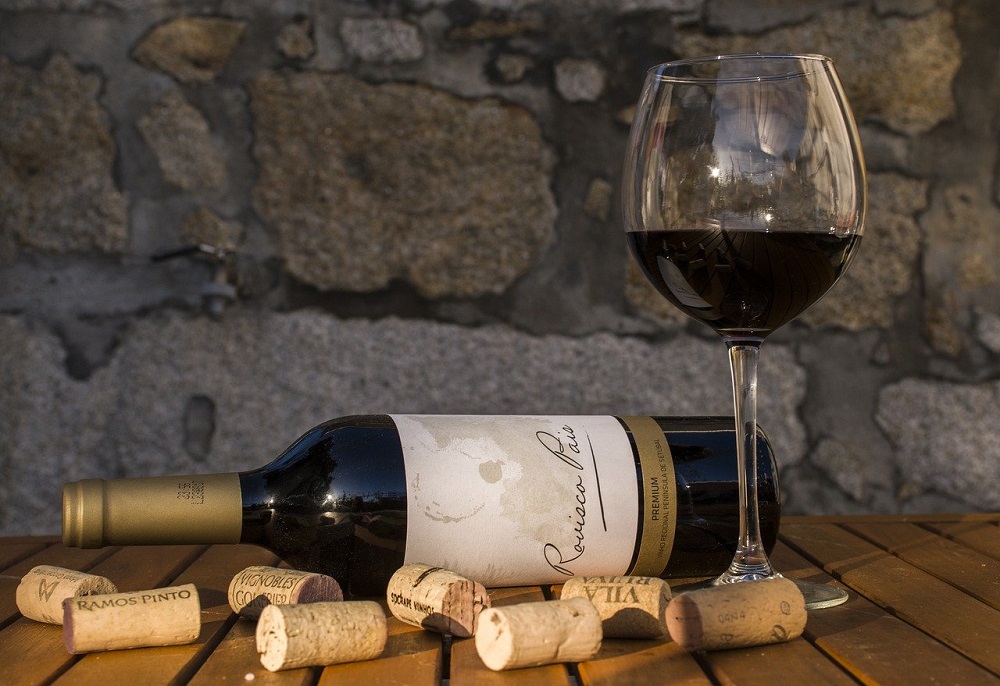
GSM Blended wines
The GSM blended wines have gained popularity in recent years as it creates a balanced and easy-drinking wine. It has become increasingly popular among Australian winemakers who have adopted this style due to their ability to grow all three grapes effortlessly. The warm climate of Australia for example in the area of Mclaren Vale allows for these grapes to ripen fully, resulting in a rich and fruity gsm blend wine with velvety tannins.
What Does Grenache Taste Like?
Grenache wine is like a symphony of flavors dancing on your taste buds. With its fruity and spicy profile, it offers an enchanting combination of ripe strawberry, raspberry, and black cherry notes that caress the palate with a luscious sweetness. This velvety red wine also surprises with hints of exotic spices like cinnamon and licorice, adding depth to its character.
The smooth texture and medium body of Grenache wine make it incredibly easy to savor, while its subtle earthiness adds a touch of sophistication. In addition to its fruit-forward nature, some Grenache wines showcase a delightful hint of herbal undertones, offering a captivating twist that keeps every sip tantalizingly fresh. Ultimately, Grenache’s innate versatility means that it can range from light and floral to rich and bold in flavor—making it an exciting adventure for any wine enthusiast’s palate.
Grenache Noir vs Grenache Blanc
Grenache Noir and Grenache Blanc are two intriguing grape varieties that offer unique characteristics and flavors. What many people don’t realize is that Grenache Blanc is actually a mutation of the red-skinned Grenache Noir. This mutation resulted in a grape with green skin and the ability to produce white wines with a delightful complexity.
The Grenache Noir, on the other hand, is known for producing bold, full-bodied red wines with rich flavors of ripe berries and hints of spice. Its versatility also allows it to be used in rosé production, resulting in refreshing and well-balanced pink rosé wines too.
One fascinating aspect of these two grapes is their adaptability to various climates, allowing them to thrive in diverse wine regions around the world. While Grenache Noir steals the spotlight with its robust red wines, Grenache Blanc quietly shines through its elegant white wine creations. Both varieties have carved out their own niche in the wine world, offering something truly special for every palate to savor.
Grenache is one of the most widely planted red grape varieties in the world. It is beloved for its versatility and ability to produce both robust, full-bodied wines and lighter, fruit-forward ones
Southern Rhone
The Southern Rhone, a region in France known for its exceptional winemaking traditions, has long been recognized as a premier destination for Grenache wine lovers.
The climate and soil of the Southern Rhone are ideal for growing Grenache grapes. The hot, dry summers and mild winters allow the vines to ripen slowly over an extended period, resulting in grapes with rich flavors and balanced acidity. Additionally, the rocky soils of the region provide excellent drainage while retaining enough moisture to nourish the vines throughout their growth cycle. Similar conditions are found in the Roussillon region.
Southern Rhone Grenache wines are typically blends that may include other varietals such as Syrah or Mourvedre.
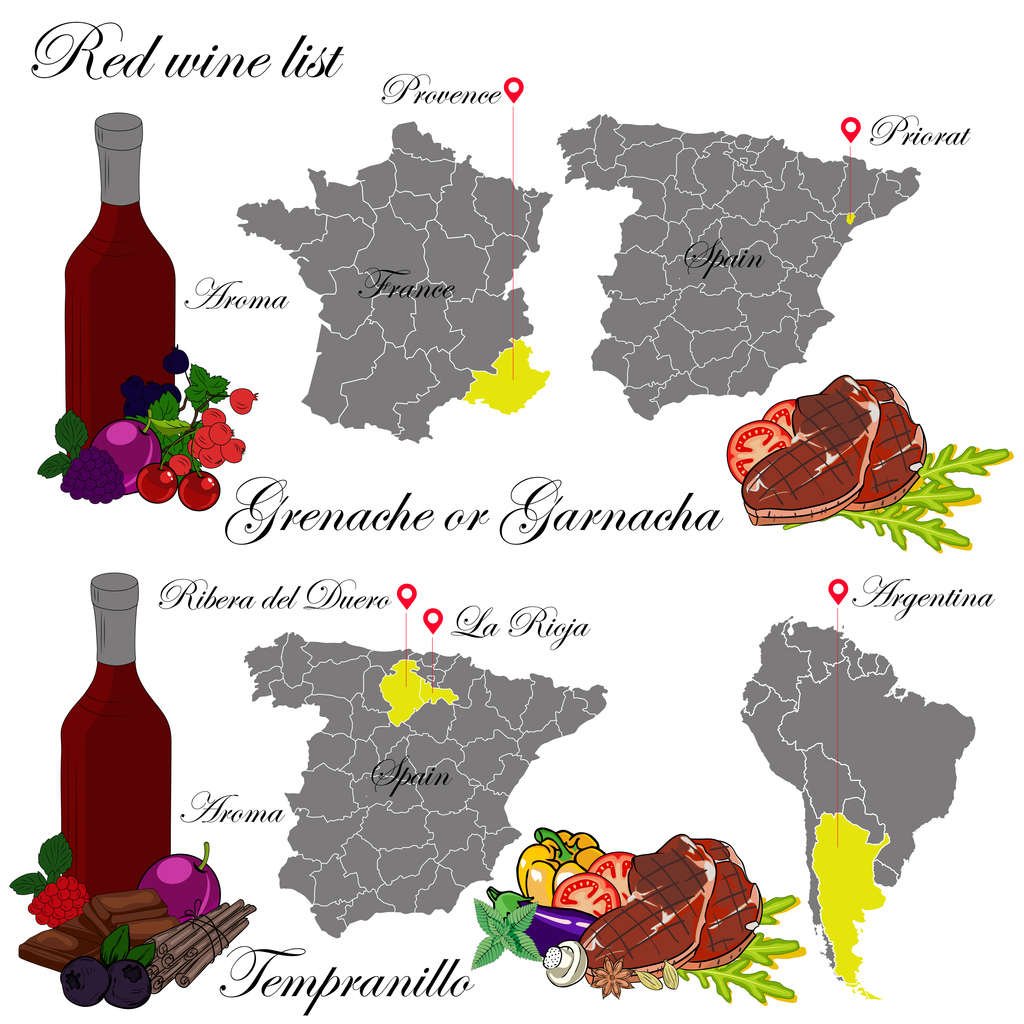
Languedoc
Grenache is a red wine grape variety that has become synonymous with the Languedoc region in France. This area is known for producing some of the world wine regions’ finest examples of Grenache, which are used to create bold and rich wines that are loved around the world. The grape thrives in warm climates such as this one, making it an ideal choice for winemakers looking to showcase the unique characteristics of their terroir.
The Languedoc region is located in southwestern France and is home to a diverse range of soils and microclimates. From the rugged hillsides of Corbières to the sun-soaked plains near Narbonne, there is no shortage of terroirs to choose from. Grenache grown here tends to be full-bodied, with plenty of ripe fruit flavors such as cherry, blackberry, and raspberry.

Southern France – Rosé wine
Grenache is a popular grape variety grown in Southern France, known for producing delicious and refreshing rosé wines. The hot and dry climate of the region is perfect for growing Grenache grapes, which thrive in the warm Mediterranean climate. These grapes are used to produce some of the finest rosé wines in the world.
The unique character of Grenache grapes produces concentrated wines with delightful and complex flavors that make it an ideal choice for making rosé wine. The pale pink color with hints of orange and salmon tones gives these wines an attractive appearance, while their fresh fruity aroma makes them irresistible to wine lovers. They have a delicate balance between sweetness and acidity with a distinct taste of red berries, such as strawberries or raspberries.

Roussillon
This region in southern France is known for producing some of the most flavorful wines in the world. Among these, Grenache stands out as one of the most popular grape varieties. While it is grown in many parts of France, it is particularly well-suited to Roussillon’s warm and dry climate.
Grenache grapes are characterized by their thick skins and high sugar content, which makes them ideal for producing full-bodied red wines with intense flavors. In Roussillon, these grapes are often used to make blends that combine Grenache with other local varietals such as Syrah or Mourvèdre. The resulting wines are rich and complex, with notes of dark fruit, spice, and earthiness.
As one of the most prominent grape varieties in Roussillon, Grenache has become synonymous with the region’s winemaking tradition.

Grenache in Spain
This grape varietal is grown all around the world. Grenache is known for its versatility and produces wines that range from light and fruity to full-bodied and complex. In Spain, Grenache is widely planted across the country but it has found a particular home in two regions – Priorat and Campo de Borja.
Priorat, located in Catalonia, is known for producing some of the most expensive wines in Spain. The region’s unique soil composition of slate and quartz adds an intense minerality to the wines produced there. Garnacha, as it’s known in Spanish, is often blended with other varietals such as Carignan or Syrah to produce powerful reds with high tannins. These wines are typically aged for several years before release.
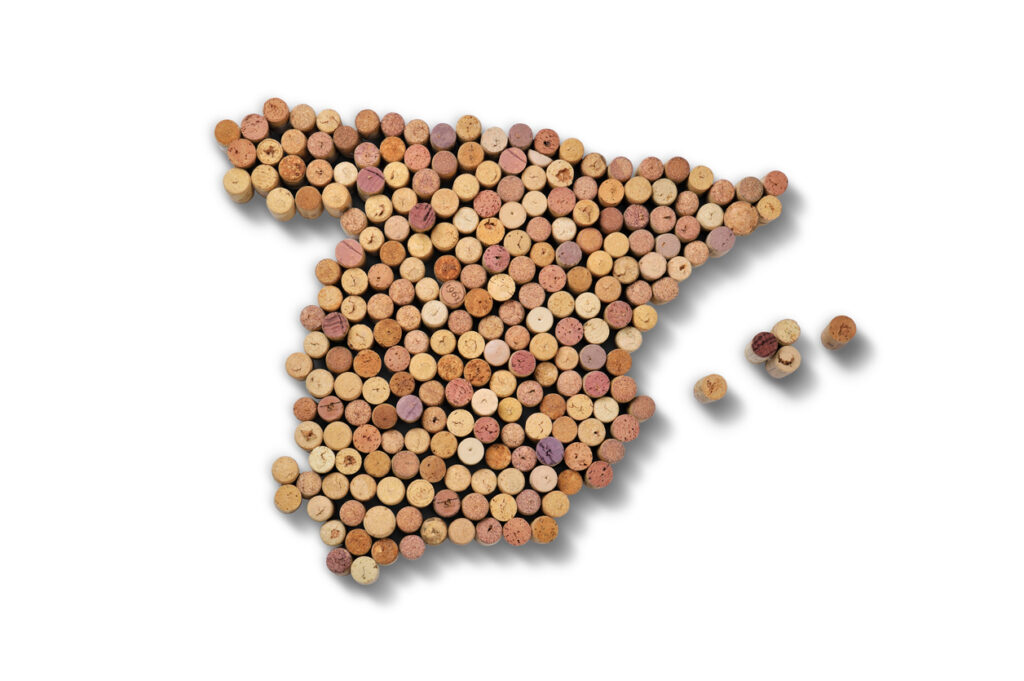
New World Grenache
USA
California is one of the leading producers of the Grenache vines in the USA. The warm climate and long growing season of California provide an ideal environment for this grape to thrive. Many wineries in California are now focusing on producing single varietal Grenache wines, which have become increasingly popular among wine enthusiasts. These wines are characterized by their ripe fruit flavors, complex aromas, and smooth texture.
Apart from California, Grenache is also being grown in other states such as Washington, Oregon, Texas, Arizona, and Virginia.
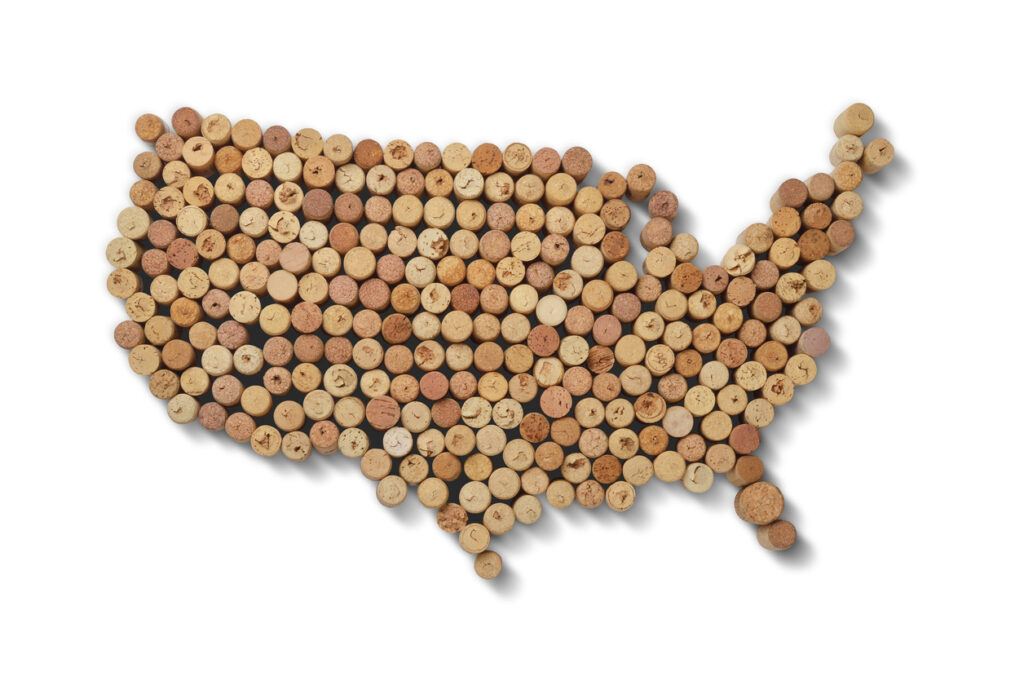
Grenache in Australia
In recent years, there has been a renewed interest in Grenache among Australian winemakers. This can be attributed to the fact that it has become increasingly difficult to grow other grape varieties due to climate change. Grenache has proven to be more resilient than many other grapes, making it an attractive option for growers who want to ensure their crops will survive changing weather patterns.
Furthermore, consumers are showing an increased preference for lighter and fresher styles of wine over heavy and oaky ones.

Foodpairing of Grenache wines
Grenache, also known as Garnacha, is one of the most widely planted grape varieties in the world. Grenache has a complex flavor profile that can vary depending on where the grapes are grown and how they are processed. This makes it an ideal wine to pair with food because it can complement a wide range of flavors.
One of the best ways to pair Grenache red wine is with spicy dishes. The fruity notes in Grenache help balance out the heat from spicy foods while still allowing you to taste all of the different spices used in your dish. It pairs particularly well with Indian and Mexican cuisine.
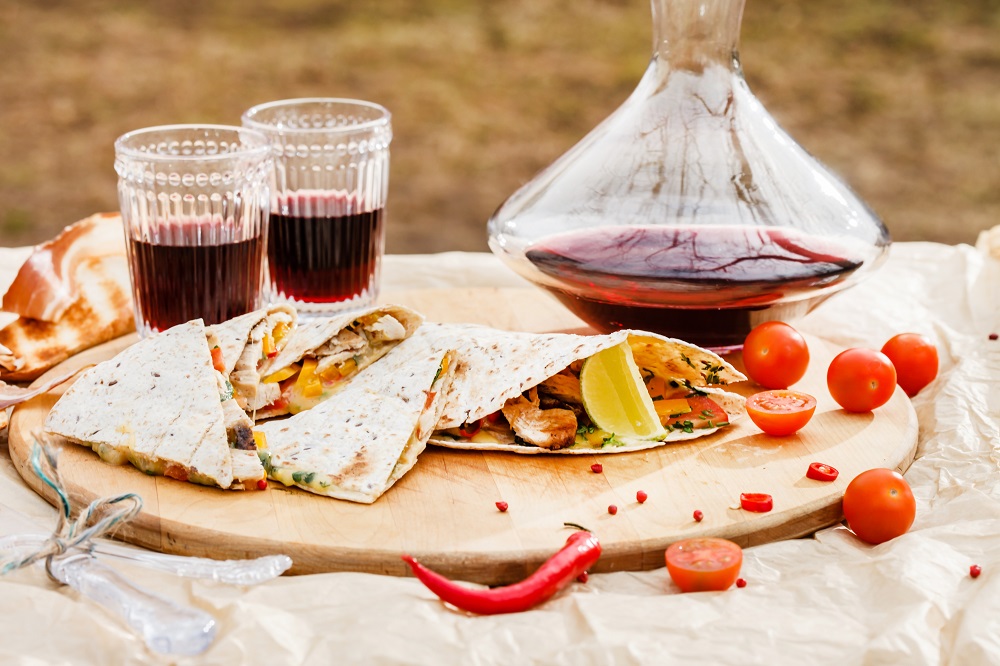
Another great pairing for Grenache is grilled meats, especially lamb. The tannins in this wine help cut through the richness of red meat, while its fruitiness complements any marinades or sauces used on your dish.
Food Pairings to Avoid with Grenache
When it comes to Grenache, a beloved red wine varietal with fruity and spicy notes, there are certain food pairings that can clash rather than complement its distinct characteristics. One pairing to steer clear of is overly spicy or heavily seasoned dishes or, as they can overpower the subtle complexities of Grenache. The heat from the spices can overwhelm the wine’s delicate flavors, leaving both the food and wine tasting unbalanced.
Another food pairing to avoid with Grenache is rich and heavy sauces, such as creamy Alfredo or rich meat gravies that require tannin to stand up to their protein. These heavy sauces tend to mask the fruitiness and earthy undertones of Grenache, diminishing its ability to shine through in the dining experience. Instead, opt for lighter sauces or simply prepared dishes that allow Grenache’s unique profile to take center stage without competing for attention on the palate. By being mindful of these pairings to avoid, wine enthusiasts can fully appreciate the nuanced qualities of Grenache while enjoying a well-matched dining experience.

